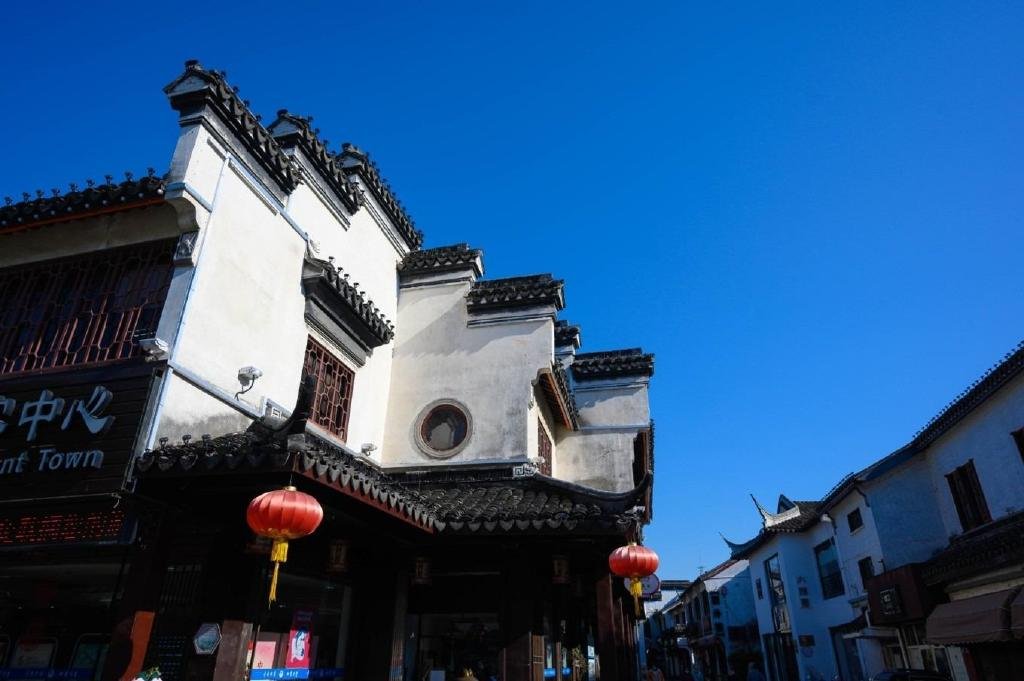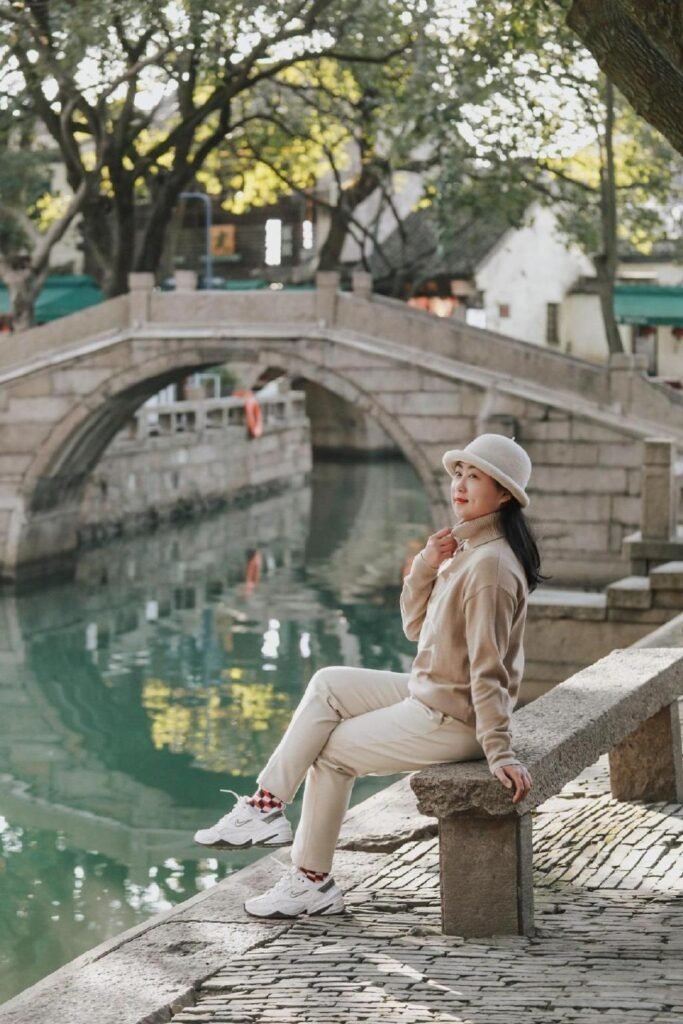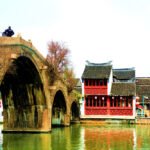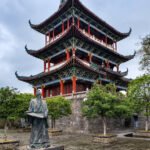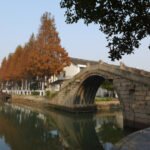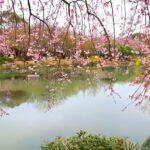Suzhou is one of my favorite cities, primarily because it’s only a 20-minute train ride from the nearest high-speed rail station to Suzhou Station, making it much closer than any other part of Shanghai. It’s a city I can visit at any time I wish. Secondly, the pace of life and work in Shanghai is truly fast-paced, and my trips to Suzhou are always about relaxation. Standing at Suzhou Railway Station, I feel a sense of slowing down, which is the slow life I desire. To get from Suzhou to Tongli, I took the subway, which ends at Tongli Station. After getting off, it’s an 8-minute taxi ride to the scenic area. Tip: Tongli Ancient Town is a 5A scenic area and one of the six major ancient towns in Jiangnan, with an admission fee of 100 yuan. My connection with Tongli Ancient Town dates back to 2013 when my daughter and I visited Tongli to film ‘杉杉来了’, where we played the roles of Zhao Liying’s neighbors, the Little Tail Mother and Daughter. Returning here after eight years, I am searching for those memories. My impressions have become somewhat vague, so let me reacquaint myself with you—Tongli Ancient Town. The town is home to numerous gardens, temples, residences, and former homes of celebrities built during the Ming and Qing dynasties. The ‘river’-shaped 15 canals divide the ancient town into seven islets, and 49 ancient bridges connect them, making it famous for its small bridges, flowing water, and dwellings. The afternoon sun is warm, and strolling leisurely through the ancient town, I enjoy this unique tranquility. The first place to recommend in Tongli Ancient Town is the Tui Si Garden, a Suzhou garden architecture and a World Cultural Heritage site. It’s a must-see for me, as I have a fondness for ancient buildings. The garden is composed of pavilions, terraces, towers, corridors, bridges, and halls, centered around a pond, with the entire structure appearing to float on the water’s surface. The two buildings are connected by a corridor, with floor-to-ceiling windows on the north and south sides, so there’s no need to walk in the rain, and on sunny days, one doesn’t fear the sun, truly an ingenious design. The interplay of light and shadow inside the house is particularly beautiful, and it kept me lingering for a long time. There are many local residents in the ancient town, which is one of the reasons I enjoy visiting here. Because here, I can find the scenes of my childhood in the alleyways, chatting with neighbors in the sun. Although our houses have become better over time, the warmth of human relationships has faded, and we often don’t even know the names of our next-door neighbors. I prefer the old feeling of eating at one house and visiting another—it’s a heartwarming memory that stays in my mind, unforgettable. While here, you can also take a ride on a hand-oar boat, watching the life along the riverbank, with people washing clothes and vegetables. When the boatwoman is in a good mood, she might even hum a tune, leisurely and carefree. Jia Yin Hall is another ancient building to visit. The main entrance of Jia Yin Hall features a stone gate wall, and upon passing through the gate hall, one can see the ‘Fu, Shou, Lu’ three stars prominently displayed at the center of the ridge. The main hall of Jia Yin Hall, commonly known as the ‘Ga Ma Hall’, is a Ming-style structure. The entire hall is tall and spacious, with patterns carved everywhere inside.
In Tongli, Suzhou, you can witness eight vivid and lifelike wood carvings depicting scenes from ‘Romance of the Three Kingdoms,’ such as ‘Ancient City Meeting,’ ‘Three Heroes Battle Lü Bu,’ ‘Three Visits to the Thatched Cottage,’ and ‘Borrowing Arrows with Straw Boats.’ These carvings, which are truly astonishing, have been included in the ‘Chinese Opera Chronicles: Suzhou Volume.’ Within the ancient town, there are also eight historical buildings worth exploring, including the Farming Joy Hall and Pine Stone Enlightenment Garden. Entering an ancient residence allows you to learn the stories behind the grand courtyards. Walking on one of the three bridges, the Jili Bridge, the guide says that crossing it can increase your fortune, so I also went to absorb some good luck. The century-old teahouse, Nanyuan Teahouse, offers the most comfortable sunlight in the afternoon. I sat on a stone bench by the river to rest, and of course, you can also go to Nanyuan Teahouse to taste tea and listen to Suzhou Pingtan. Nanyuan Teahouse is a century-old establishment that hosts Suzhou Pingtan performances every afternoon from 14:00 to 16:00. Call the waiter for a pot of hot tea and order a steaming basket of homemade soup dumplings, and your Chinese afternoon tea is perfectly arranged. Listening to the tunes, such enjoyment is probably only satisfied in Tongli. In the summer, Nanyuan Teahouse also offers homemade sour plum soup. The tiger stove and thermos, though not part of my childhood, were often mentioned by my grandmother, and they are quite fresh to me. The clear sky is visible upon looking up, and I have felt the warmth of winter in Tongli.

